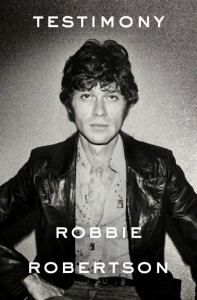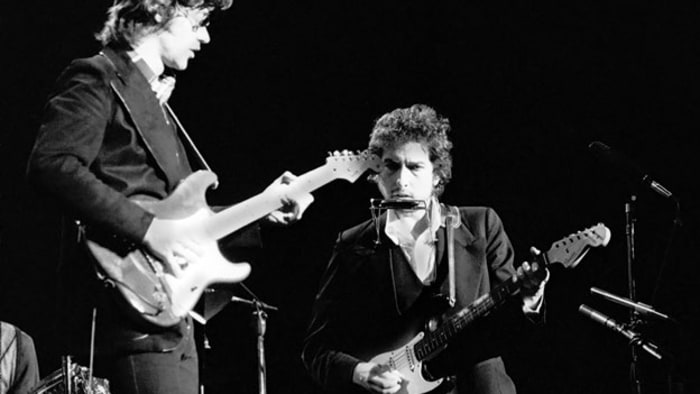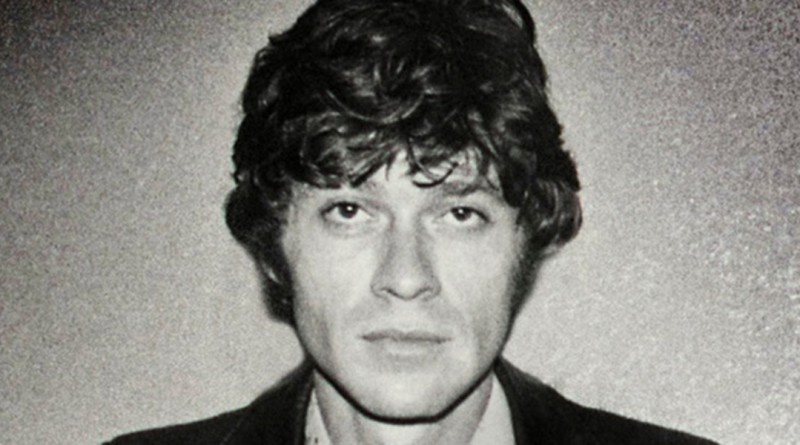Robbie Robertson’s “Testimony” – A Review
 The guitarist and chief songwriter of The Band, Robbie Robertson, released his memoir Testimony late last fall, amidst the usual media fury. The book had to compete with Bruce Springsteen’s lumbering autobiography in the rock book sweepstakes, so Testimony was a tad overshadowed, which is unfortunate, because it is by far the better book.
The guitarist and chief songwriter of The Band, Robbie Robertson, released his memoir Testimony late last fall, amidst the usual media fury. The book had to compete with Bruce Springsteen’s lumbering autobiography in the rock book sweepstakes, so Testimony was a tad overshadowed, which is unfortunate, because it is by far the better book.
For one thing, Robertson concentrates on a more limited period of time, focusing on the years when he was primarily a member of various bands. From roughly 1958, when he joins Ronnie Hawkin’s backing ensemble, to final performance of The Band at The Last Waltz in 1976 (the film and the triple album were finally finished two years later in 1978), Robertson charts the ups, downs and in-betweens of a dubious and difficult industry that expanded with the 1960s counterculture, only to crash back to earth in the 1970s due to an excess of a growing drug culture.
That drug culture would eventually overwhelm most of his partners in The Band, leading to the early deaths of vocalist/keyboardist Richard Manuel and bassist Rick Danko. It is one of the central tragedies of Testimony, as Robertson describes how he almost single-handedly held the group together, beyond writing most of its material, while navigating knotty relationships that included working with Bob Dylan both as a backing band and as active collaborators on the Basement Tapes and the 1974 tour that resulted in the landmark double live album Before The Flood. Robertson’s excitement and enthusiasm for his group’s extraordinary achievements is tempered by the sheer human cost that the music business exacted upon his close associates and friends.

Still, this is a book that catches some of the most important moments in 1960s and ‘70s culture. Backing Dylan on a 1966 world tour where the musicians were booed vigorously, every night, captures a crucial point of time when folk and pop were passing over the fulcrum to become rock. Descriptions of the 1970 train ride that was the Festival Expressfinds The Band sharing stages with The Grateful Dead and Janis Joplin, just weeks before her tragic death. And his retelling of the creation of his group’s first two albums, records that changed the direction of music and fashion, is brisk, engaging, and for me, ultimately mesmerizing.
Along the way, Robertson reveals some strange and wonderful facts. For example, one of his first acts upon joining up with Ronnie Hawkins was a trip to the Brill Building in New York City in search of songs. On that trip the young songwriter met the notorious music industry executive / crook Morris Levy, who would appropriate two of Robertson’s tunes, setting the tone for some of the industry’s more unfortunate practices. For example, Levy ended up owing Tommy James (of the Shondells) something like forty million dollars for unpaid royalties. The problem was that if you wanted to collect, you might win yourself some concrete shoes, fitted for a one-way trip to the bottom of the Hudson River.
Robertson also reveals that he recorded with the legendary jazz icon Charles Lloyd in 1965, the year before LLoyd became the first jazz artist to sell a million copies of an album (in this case the live-from-Monterey disc Forest Flower). The guitarist and songwriter also met and maintained several long term relationships with important artists such as the filmmaker Michelangelo Antonioni and Salvador Dali.
Ultimately, however, Testimony is about the music. The career of The Band is studded with great music, from hit singles such as “The Weight” and “Life Is A Carnival” to more mythic pieces like “The Night They Drove Old Dixie Down,” where Robertson evoked the American Civil War era from the losing side. Most of The Band’s members were from Canada, including Robertson himself, a half-Mohawk, half Jewish bar band musician who eventually elevated himself to a position of major songwriter, guitar stylist, actor and soundtrack artist. But along the way, they became the avatars of a musical stream that would eventually be called “Americana.”
At the end of Robbie Robertson’s time in the Band, in 1975 and 1976, he turned his writing towards a mythic view of Nova Scotia. Much like he did in “The Night They Drove Old Dixie Down,” the songwriter reached back to Acadian history to write two songs, “Acadian Driftwood” (from the 1975 album Northern Lights-Southern Cross) and “Evangeline” (from The Last Waltz). Again, Robertson considered the situation from the losing side, providing a unique perspective on a people and their fate.
Testimony ends on the guitarist and bandleader’s struggle to complete challenge of The Last Waltz. It began as a goodbye to touring – an extravagant American Thanksgiving feast and concert featuring musical friends like Muddy Waters, Van Morrison, Joni Mitchell, Eric Clapton, Neil Diamond, Dr. John, Paul Butterfield and Bob Dylan. It ended up as a feature documentary that summed up the end of an era, as punk rock and disco were nipping at rock’s heels. Once it was over Robertson found he could not motivate his bandmates to show up to finish the sessions.
It’s a sad moment in the book, as Robertson had moved the group from Woodstock in upstate New York to the Malibu Colony in California in vain hope that the drug-and-drink culture might be mitigated by sunshine and better weather. It didn’t work, and as the wheels came off the musical cart, The Band descended even further into California’s cocaine-riddled culture.
It’s a bit of a miracle that Robertson managed to survive. Now with only him and keyboardist Garth Hudson still alive, the legacy of The Band will have to live on in their recordings, and books like this one.
Testimony bears all the hallmarks of Robertson’s songwriting: intelligence, taste, restraint and integrity. It’s a terrific book and an essential read for anyone interested in music and cultural history, documenting a bygone era of high hopes, shattered dreams, and beautiful music.
Latest posts by View 902 (see all)
- Robbie Robertson’s “Testimony” – A Review - January 17, 2017
- Dan Dare Takes Off Once More! - December 27, 2016
- Halifax Weather Girls – 13 February 2016 - February 16, 2016


